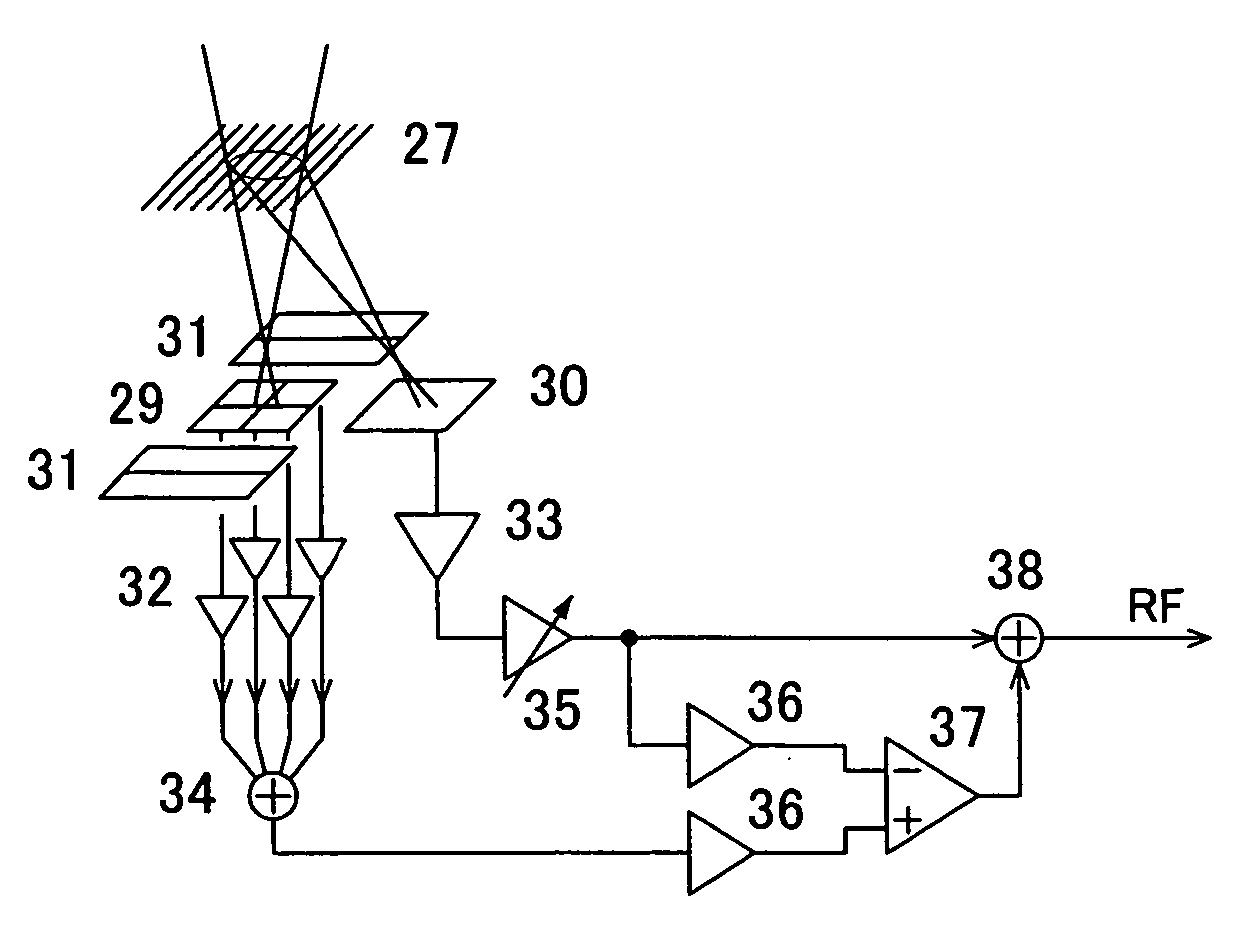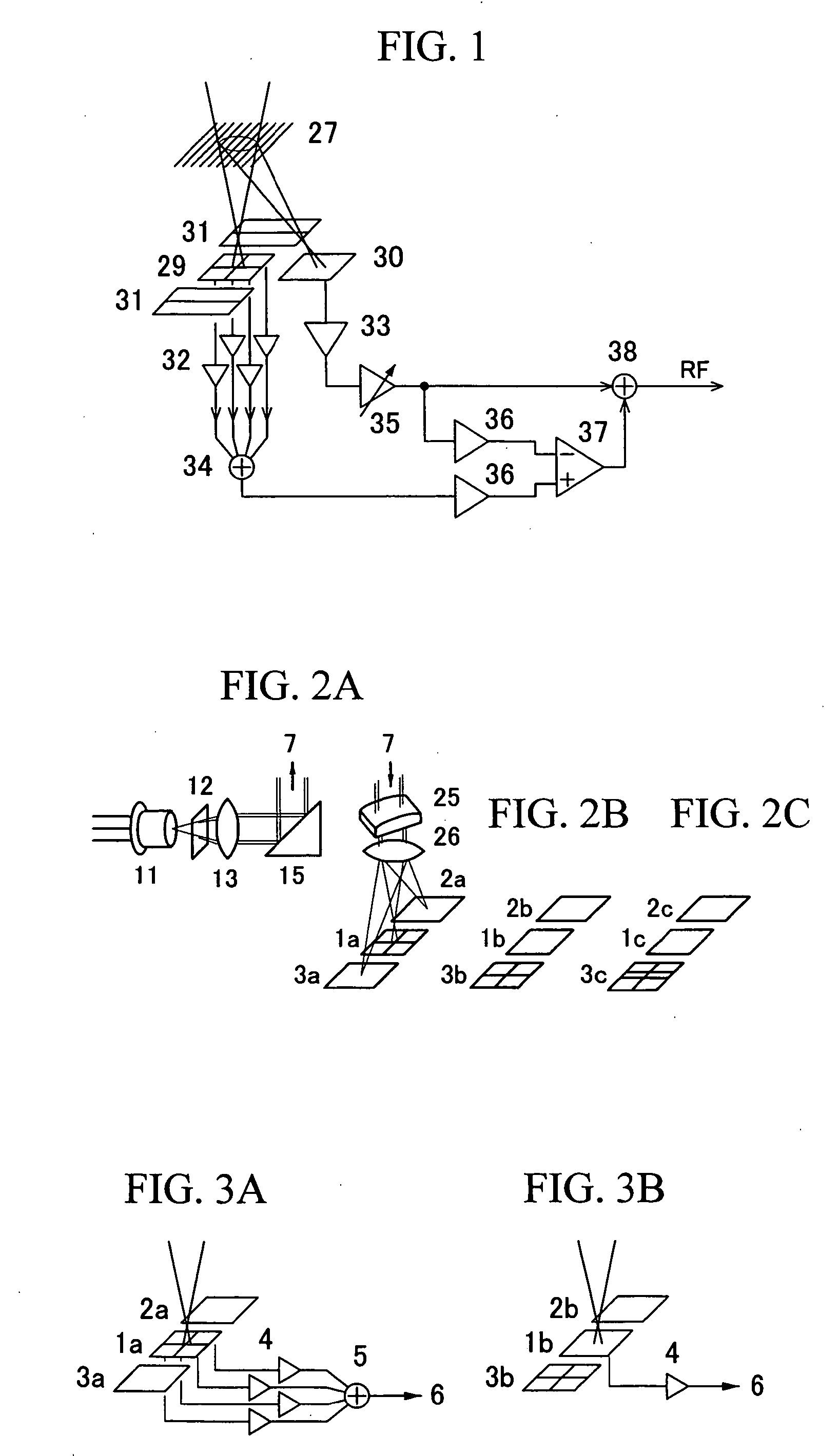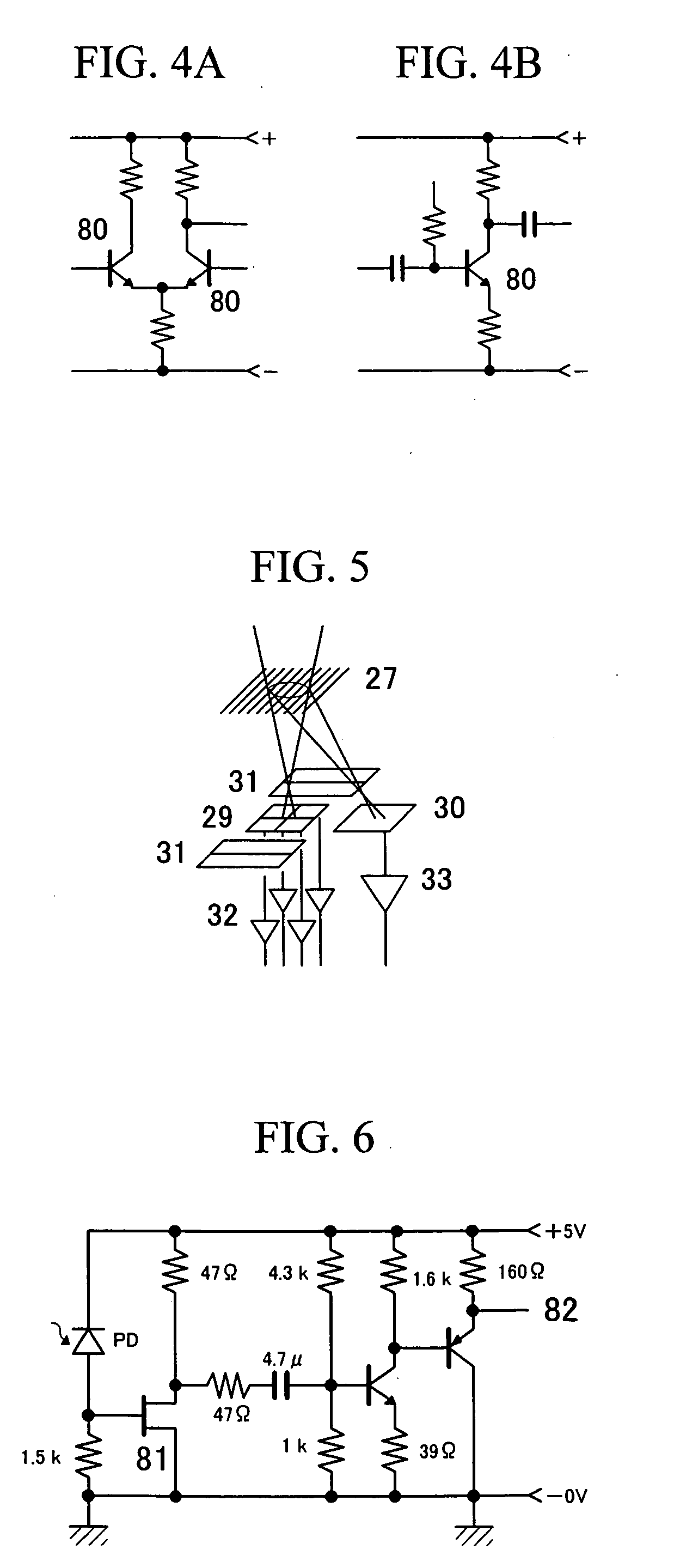Information reproduction apparatus
a technology of information reproduction and optical disk, applied in the direction of data recording, optical recording heads, instruments, etc., can solve the problems of complex circuitry in the following stage, inability to capture readout signals (rf signals) from sub spots, and factor of forcing up costs, etc., to improve compatibility, data rate, reliability
- Summary
- Abstract
- Description
- Claims
- Application Information
AI Technical Summary
Benefits of technology
Problems solved by technology
Method used
Image
Examples
first embodiment
(Optics Section Having a Separately-Located Radio-Frequency (RF) Signal Detector Plane)
[0059] A configuration example of an optical information reproduction apparatus equipped with a detector plane dedicated to RF signal detection, according to the present invention, is discussed, using FIGS. 1 through 20. First, a configuration example of a light receiving optics section of the information reproduction apparatus, according to the present invention, is presented, using FIGS. 5 and 14.
[0060]FIG. 5 shows an example of arrangement of photodetectors having detector planes and a photocurrent amplifier connected close to the main elements, according to a differential push-pull method, which is one three-spot method. A beam from a laser light source hits an information recording medium, the light amount of the beam is modulated by information recorded there, and the beam is reflected by the medium. The reflected beam, after converged through a detection lens, enters the present optics s...
second embodiment
(RF Signal Amplification with the AC Amplifier)
[0072] A configuration of the AC amplifier employed as the photocurrent amplifier according to the present invention and its effect are discussed, using FIGS. 4 through 8. As described above in the “Background” section, a differential amplifier shown in FIG. 4A is generally used as a DC amplifier to correctly amplify a change in DC for the amount of light detected, relative to a signal potential corresponding to the zero amount of light. In circumstances where amplifier noise must be constrained, the S / N ratio has been deteriorated by about 6 dB by this differential amplification.
[0073] By contrast, if the AC amplifier shown in FIG. 4B can be used, noise generated by the amplifier can be suppressed to a minimum level. The amplifier noise can be improved by above 6 dB as compared with the DC amplifier shown in FIG. 4A. Because of AC coupling, the AC amplifier cannot amplify a change in DC voltage. However, the AC amplifier does not ha...
third embodiment
(First Arrangement for Generating Combined RF Readout Signals)
[0081] Next, a first arrangement example for generating combined RF signals with lower noise from RF signals amplified by the AC amplifier and signals amplified through DC amplifiers from the four-quadrant photodetector planes according to the present invention and its effect are discussed, using FIG. 1 and FIGS. 8 through 16.
[0082]FIG. 1 shows an optical head's photodetecting section and circuitry in the vicinity of the photodetecting section (optical head) in the optical information reproduction apparatus. A diffraction grating located in front of the photodetector chip splits an incident beam to the photodetectors into two or more beam components. The arrangement of FIG. 1 is designed to detect TR and AF signals by the three-spot method. The entire structure of the apparatus will be described later, using FIG. 20.
[0083] Among three spot beams directed to hit the photodetectors, a center spot beam is split by the di...
PUM
 Login to View More
Login to View More Abstract
Description
Claims
Application Information
 Login to View More
Login to View More - R&D
- Intellectual Property
- Life Sciences
- Materials
- Tech Scout
- Unparalleled Data Quality
- Higher Quality Content
- 60% Fewer Hallucinations
Browse by: Latest US Patents, China's latest patents, Technical Efficacy Thesaurus, Application Domain, Technology Topic, Popular Technical Reports.
© 2025 PatSnap. All rights reserved.Legal|Privacy policy|Modern Slavery Act Transparency Statement|Sitemap|About US| Contact US: help@patsnap.com



